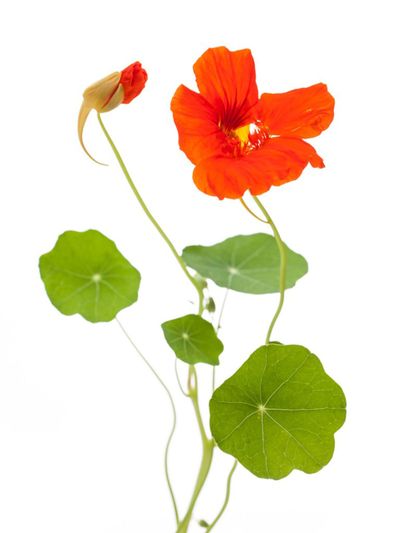Leggy Nasturtium Seedlings and Plants
Nasturtium plants come in two main types: vines and bushes. The vines can grow quite long, either up on a trellis or other structure or along the ground. The bushes are shrubbier, but they, too, tend to throw out some runners. Neither type of nasturtium has the most orderly growth, nor do they lend themselves to strict pruning and shaping. Think of nasturtium as a cottage garden or herb garden plant. It should look natural and a little unruly. In spite of this natural kind of growth, there is no reason to have nasturtiums that are leggy. This means the stems have grown long and floppy and without enough leaves and flowers. The plant looks spindly. This is typical with mature plants but can also happen with seedlings. Leggy nasturtium seedlings have long, skinny stems with few too leaves. They won’t grow strong stems this way, so it does need to be corrected.
Preventing and Pruning Leggy Nasturtiums
To avoid or correct leggy seedlings, make sure they get enough sunlight. If they have to reach for light, they may grow too rapidly. Excessive heat can also cause a burst in seedling growth, making them leggy, so avoid heating pads if they are warm enough in their starter trays. Also helpful in avoiding this early legginess is consistent moisture in the soil and proper spacing. If your mature nasturtiums are leggy, they could stand to be pruned a little. For the bush species, pinch off spent flowers and older stems back to where they meet other stems. This will keep the plant bushy and shapely. Vining nasturtiums are particularly vulnerable to getting leggy and messy looking. Trim back the longest vines by 6 to 12 inches (15-31 cm.). This will stimulate new growth, both leaves and flowers, so that you get more branching and fill in the spaces preventing the growth of long, leafless vines. Vines can break easily, so use pruners to cut where you want to trim them, avoid just pulling on the vines or you’ll rip them out entirely.
